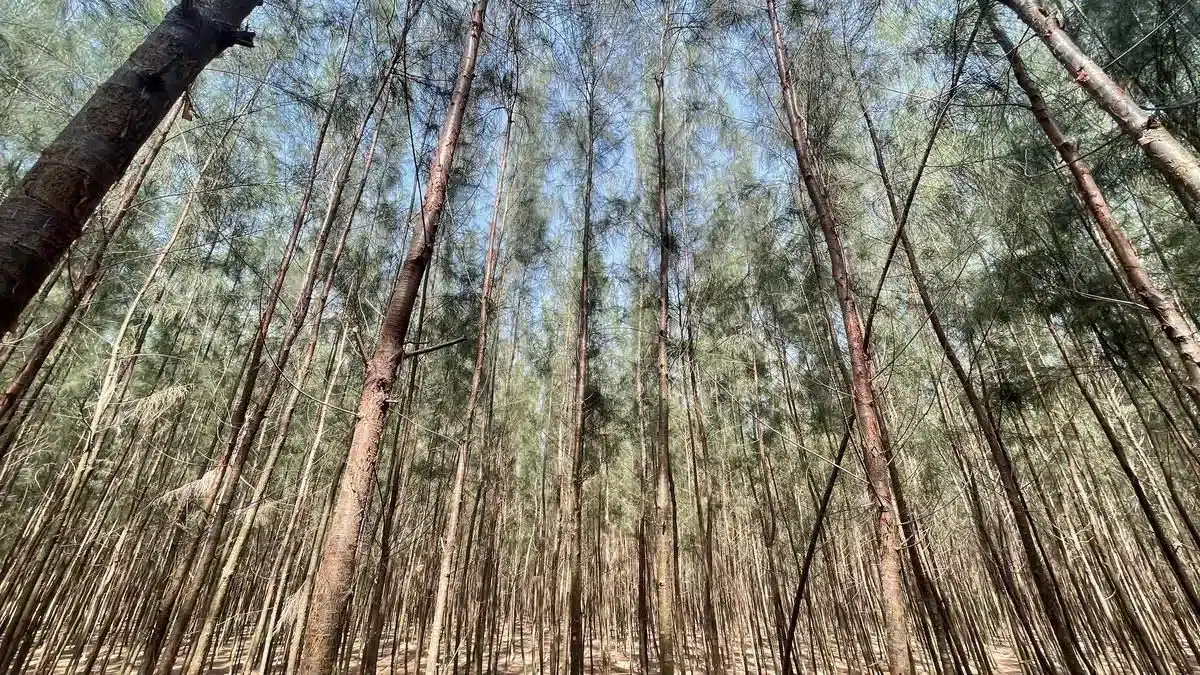About Casuarina Tree:
- It is native to Australia and it was introduced in India around the 19th centuary.
- It is also known as kattadi and savukku.
- There are four cultivated species of casuarinas viz., Casuarina equisetifolia, Casuarina glauca, Casuarina cunninghamaina and Casuarina junghuniana.
- The nitrogen fixing ability and adaptability to grow in a wide range of soil and climatic conditions including moisture and nutrient limited sites makes Casuarina a preferred choice for commercial and environmental planting programme.
- Distribution: Casuarinas are widely planted in the tropics, subtropics and Mediterranean countries because of their ready adaptability to a variety of environmental conditions and also for their rapid growth performance.
- Climate: The trees are suited to a wide range of temperature from 10°C-33°C, from sea level upto 1500m and mean annual rainfall between 700 and 2000 mm.
- Soil: The tree is best suited to light soils. This species tolerates calcareous and slightly saline soils, but it is grown poorly on heavy soils such as clays.
- Uses
- Apart from fuel, the wood is extensively used for papermaking and of late is a preferred choice for biomass-based power generation.
- The straight cylindrical stems find use in rural house building and as scaffolds in construction sites.
- It is the principal species for developing shelterbelts in coastal areas and windbreaks for protecting agricultural crops.
- It also plays a key role in reclaiming mined areas and afforesting nutrient-poor sites.
Q1: What is the Mediterranean climate?
It is a major climate type of the Köppen classification characterized by hot, dry summers and cool, wet winters and located between about 30° and 45° latitude north and south of the Equator and on the western sides of the continents.
Source: Casuarina farming sees resurgence in Vedaranyam six years after Cyclone Gaja
Last updated on December, 2025
→ Check out the latest UPSC Syllabus 2026 here.
→ Join Vajiram & Ravi’s Interview Guidance Programme for expert help to crack your final UPSC stage.
→ UPSC Mains Result 2025 is now out.
→ UPSC Notification 2026 is scheduled to be released on January 14, 2026.
→ UPSC Calendar 2026 is released on 15th May, 2025.
→ The UPSC Vacancy 2025 were released 1129, out of which 979 were for UPSC CSE and remaining 150 are for UPSC IFoS.
→ UPSC Prelims 2026 will be conducted on 24th May, 2026 & UPSC Mains 2026 will be conducted on 21st August 2026.
→ The UPSC Selection Process is of 3 stages-Prelims, Mains and Interview.
→ UPSC Result 2024 is released with latest UPSC Marksheet 2024. Check Now!
→ UPSC Prelims Result 2025 is out now for the CSE held on 25 May 2025.
→ UPSC Toppers List 2024 is released now. Shakti Dubey is UPSC AIR 1 2024 Topper.
→ UPSC Prelims Question Paper 2025 and Unofficial Prelims Answer Key 2025 are available now.
→ UPSC Mains Question Paper 2025 is out for Essay, GS 1, 2, 3 & GS 4.
→ UPSC Mains Indian Language Question Paper 2025 is now out.
→ UPSC Mains Optional Question Paper 2025 is now out.
→ Also check Best IAS Coaching in Delhi

















